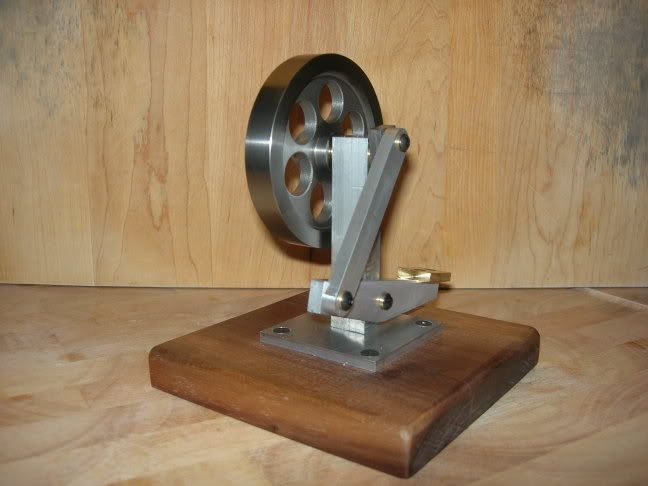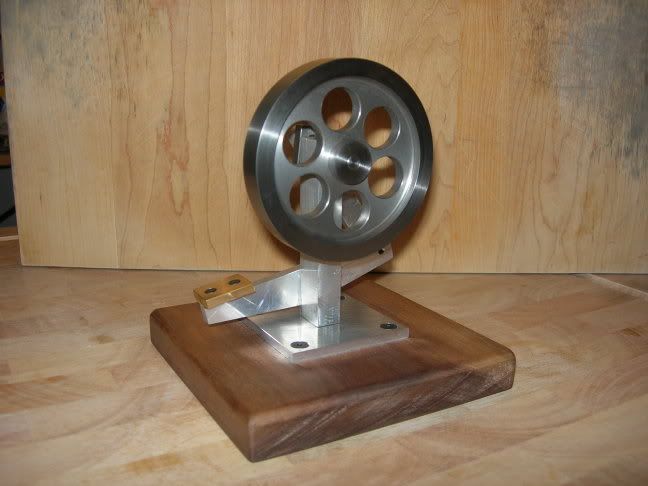Unwanted gone, managed to get back in the shop to finish off these damned cranks.
As I said, I am silver soldering mine, mainly because I love silver soldering, and if you can master it, the world of little engines gets a lot easier. Rather than having to pin or screw something together, you can make a much neater job by soldering.
This is the start of getting the job done. The flux (Tenacity 4A) is mixed with water and a drop of washing up liquid to a consistency of pouring cream. If kept in a little sealed container it will last for months in this state.
I am using Easyflo solder, but in the form of thin wire (0.5mm). This is wrapped around the crankrod to form a spiral, just like a spring, then it is cut along the edge to give me a load of little rings.
Cleanliness is paramount to getting a good join. Degrease first then clean it with either carpenters wire wool (no protective oil) or a scotchbrite pad and handle the parts as little as possible.
The way I assemble is to paint a bit of flux into the holes and then push the rods thru, then paint a bit more flux either side of the holes. Then just pop a silver solder ring onto the outside joint where the rod enters the web. This will allow the solder thru capillary action to fill up the joints.
This shot shows the assemblies mounted onto a makeshift hearth made from a couple of firebricks. Only three small rings of solder have been used on each assembly.
I will solder each one in turn. This is really only possible because of the flux that I use, it is designed for mainly stainless but the main property is that it can withstand extended heating without breaking down. With borax you would be lucky to get one done.
I started by playing the flame onto the front left one, between the two main webs, this allowed the heat to go into the blocks and travel along the shafts. About twenty seconds later the solder melted and was sucked into the joint, during this operation the rear set was being warmed up. I then did the front right using the same method then quickly dropped onto the back one which was almost up to temperature and only took a few seconds to complete.
They were allowed to cool down for about a minute then dropped into quench water, which knocked off about 90% of the flux. The flux I use is very aggressive, and if left for too long on non ferrous parts it will eat into them (I am talking about hours, not minutes).
Because most of the flux was removed I decided not to put them into a citric acid pickle bath.
Here they are straight out of the quench, nice clean fillets and good penetration thru the joint. Cut out the unwanted bits and onto the lathe for dressing up.
One finished, two to go.
You need to be aware that a built up crank like this, with a grub screw to allow assembly of the conrod is in fact unstable, and might need a bit of resetting of the grub screw and webs to get it running true, but usually no problems are encountered. I usually hang the conrod down into the vice jaws, push the two webs down onto the tops of the jaws and tweak up the screw.
This is a quickie sketch of the dimensions of my crank webs.
That is the hard part done. Just the conrod and finger doo-dah and then it will be baseplate and assembly time.
BTW, now that I am over half way thru I will tell you why I have done this posting.
I am looking to do a build of an engine like my poppet valve one, only a little more simple, and a lot more machining techniques explained. I have been following this post to see what people have to say and how many questions are asked, plus how many 'spoiler' posts are put in here.
It has been very enlightening. Very few questions asked (just as though everyone knows what I am on about), a few little spoilers and a few comments. Not what I was expecting at all. Will have to see when it is finished in a few days time.
John





















































































